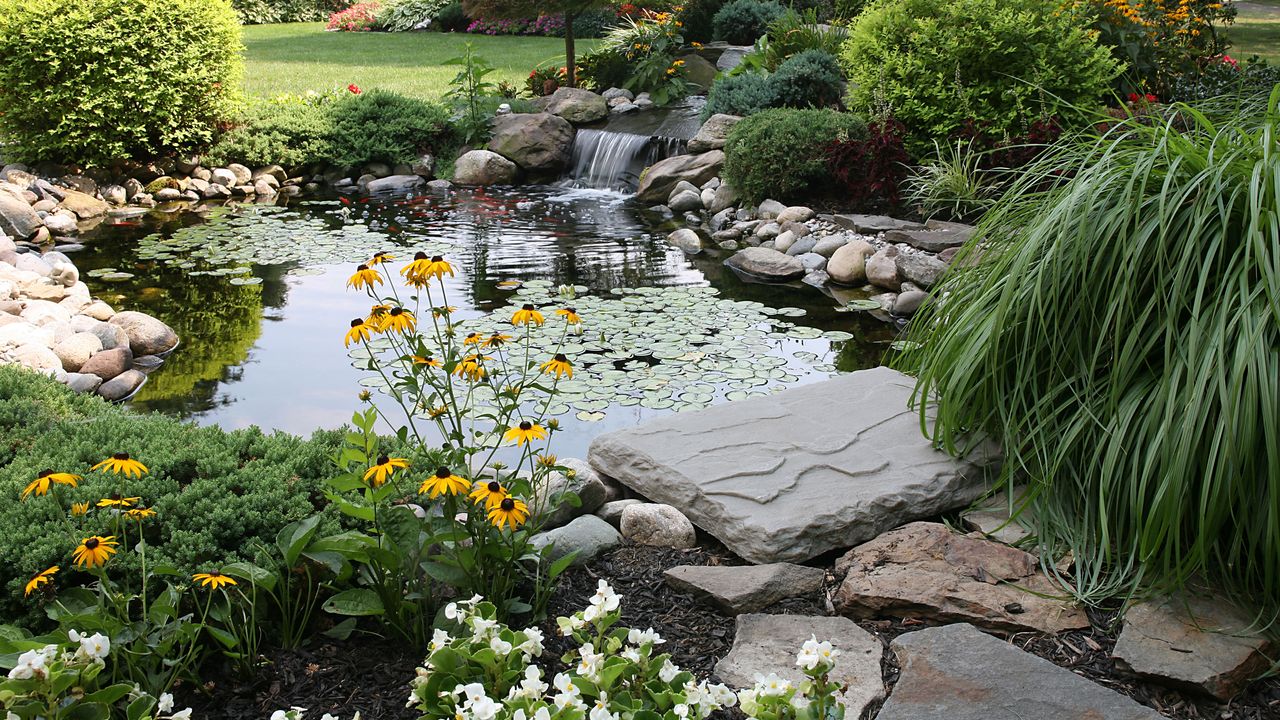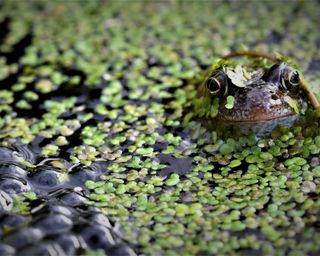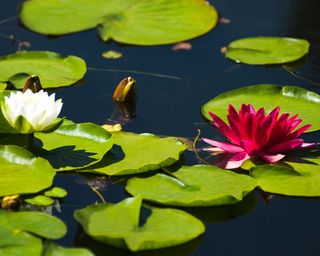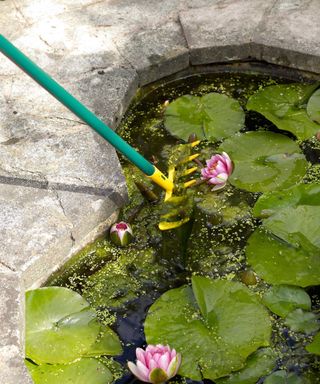Monty Don shares four nature-friendly pond care tips for helping local wildlife
He explains that it is possible to have a pond that's both an attractive garden feature and a place for wildlife to thrive


Adding some water into your garden in the form of a pond or water feature has a particularly soothing effect on hot days. Ponds also happen to be the best thing you can do to support local wildlife in your garden, according to the RSPB.
Garden pond ideas provide fresh water for birds and hedgehogs, and will also attract frogs, newts, dragonflies, butterflies and many other tiny creatures. Monty Don has shared some key tips to remember when caring for your garden pond to ensure it's nature-friendly.

Monty Don pond care tips: 4 wildlife-friendly suggestions
If you love to welcome creatures to your plot, then these tips are definitely worth considering. And if you're after more wildlife garden ideas, our guide has plenty.
1. Do not disturb the frogspawn
Make sure you don't disturb any frogspawn in your pond, which can appear in late January, February and March in the UK. Monty Don explains on his blog that frogs tend to spawn in shallow, still water.
A pond, big or small, is therefore brilliant if you want to support frogs and newts – as long as you have space to accommodate one. 'If you are lucky enough to have [frogspawn] in your pond (and occasionally even in a puddle) then leave it well alone and do not be tempted to clear the pond or plant anything,' Monty writes.
The gardener recommends waiting until the middle of April to do anything to the pond if you've spotted some frogspawn, as by this time all tadpoles will have hatched. Frogspawn usually takes three weeks to hatch into tadpoles and between 12 and 14 weeks to grow into frogs.

2. Avoid fountains
Although water feature ideas can be lovely additions to a garden, and will help to reduce algae on a pond, don't add a fountain to your pond if you want to encourage frogs to breed. Monty outlines how frogs are drawn to the scent of glycolic acid, which is produced by algae.
Plus, any water feature requires a pump that sucks water, which isn't good news if you're a small tadpole.
3. Wait until May for planting and dividing aquatic plants

'By the middle of May, the water of any pond is likely to be warm enough to plant into and to lift and divide any existing plants,' Monty Don writes. This is also a good time to plant the best pond plants, like water lilies and spiked water milfoil, which are both deepwater aquatics that help oxygenate the water.
4. Rake the pond gently and leave algae and weeds next to the pond for 24 hours

Gently clean the pond with a wire rake, running it over the surface of the water to pick up the algae and any blanket weed. 'The important thing to do is not put them into a wheelbarrow or trug straight away,' Monty said on Gardeners' World.
'Put them on the edge of the pond, because in there will be a whole myriad of little creatures.' By placing them on the edge of the pond and leaving them for a day or so, you will allow any living creatures to return to the pond.
'The pond itself, left alone, will be happy,' he adds. 'It's whether you, the gardener, like what it's doing. As far as I'm concerned, I think I'm more interested in the wildlife than perfectly grown water lilies. But the two are not mutually incompatible.'

Millie Hurst has worked in digital journalism for five years, having previously worked as a Senior SEO Editor at News UK both in London and New York. She joined the Future team in early 2021, working across several brands, including Gardeningetc. Now, she is Senior Content Editor at Ideal Home, taking care of evergreen articles aimed at inspiring people to make the most of their homes and outdoor spaces.
